Hospitals, dentists, clinics specialized in traditional Korean medicine and all other medical facilities are concentrated in Goesan-eup, the downtown area of Goesan-gun County. As such, it's difficult for residents who don't live in the central area to receive medical treatment at the bigger health centers. However, the residents have no complaints about this inconvenience owing to the existence of a localized public healthcare support system.
In the villages and towns that fall under the county's jurisdiction, there are 11 "sub-health centers" with resident public health doctors and 28 "primary health care posts" with resident nurses. A public health doctor is a male physician who, upon graduating from medical school, treats patients in a remote region for three years in place of enlisting in the otherwise mandatory military service. Civil servants that work at primary health care posts are qualified nurses and midwives. They receive 24 weeks of training before they begin treating patients, and are given limited prescription rights.
In downtown Goesan-eup, where the county office is located, there is a health center that comprehensively manages all the sub-health centers and primary health care posts.
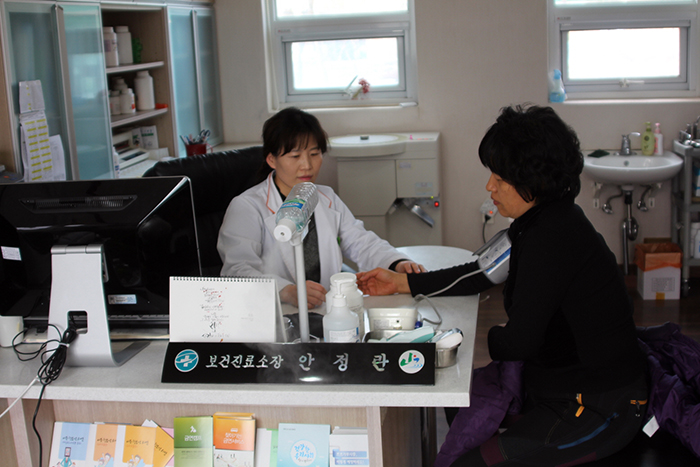
A local resident receives treatment at a primary health care post, a medical facility that is at the forefront of public healthcare. Located in Goesan's remote agricultural and fishing towns and villages, these primary health care centers are responsible for the preventative treatment of the area's residents.
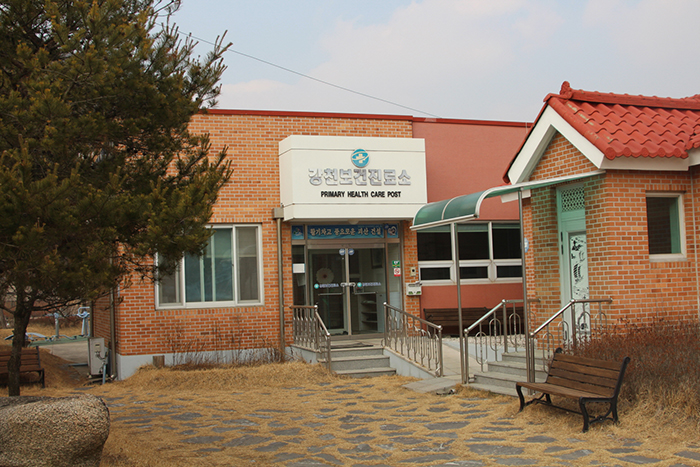
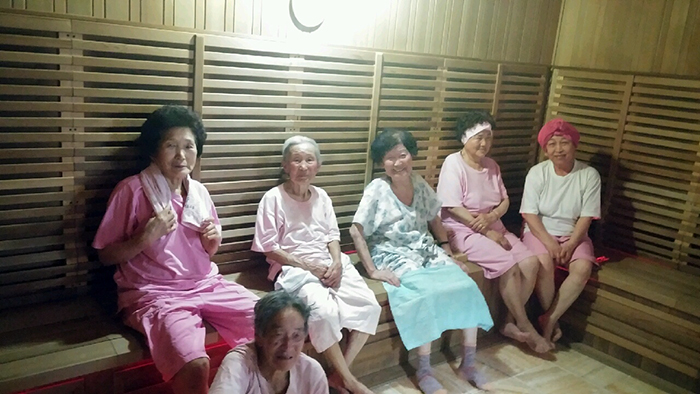
Primary health care post sites are generally only 660-square-meters, with a floor space of only 165 square meters. These facilities feature doctors' offices, fitness centers and saunas.
On March 14, Korea.net visited the Gangcheon Primary Healthcare Post in Igok-ri, Sari-myeon, Goesan-gun County, to find out more about the facilities there.
Ahn Jeong-ran, head of the Gangcheon post, said, "Our facility is responsible for around 900 residents from 12 villages, and between 160 to 250 patients are treated here per month. Patient numbers rise in the agricultural off-season." She explained that, "Our post's Civil Servants in Healthcare, who are all licensed nurses or midwives, are qualified to treat patients with illnesses like stomach aches, coughs, a fever or diarrhea. They're also able to prescribe and administer medication to patients, provided the drugs fall within certain regulations."
Korea's standardized medical services, offered in every corner of the nation's countryside, including Goesan-gun County where Ahn is based, covers treatment for many ailments and illnesses. Below is a list of some of the costs of certain medicines for certain illnesses.
Common cold, body aches, indigestion and other acute illnesses: KRW 500-900
High blood pressure, diabetes, hyperlipidemia and other chronic illnesses: KRW 12,200
Physical therapy, tooth extraction, gum disease, scaling: KRW 1,100
For persons aged over 65, all services are offered free-of-charge Free sauna once a week in each town
Free physical exercise prescription
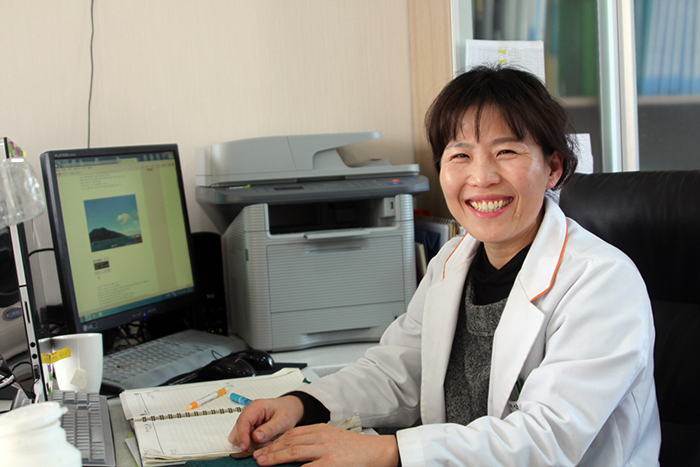
Ahn Jeong-ran, head of the Gangcheon Primary Health Care Post, says that while it's a huge responsibility to treat over 900 residents from 12 nearby villages all by herself, she feels rewarded by the warm generosity of her patients who bring her radishes, cabbages and corn as a token of their gratitude.
Korea's public healthcare system was set up much later than healthcare systems in the West. Following independence in 1945 and the establishment of the U.S. military government in Korea, healthcare programs were started with a focus on preventive health. In 1946, a healthcare center was built in Seoul which became the bedrock for future public healthcare services. In 1948, with the formation of the government, a national healthcare organization was promulgated. In truth, however, it remained only a nominal organization. During the Korean War (1950-1953) all medical facilities and equipment was destroyed, and given the extreme poverty across the nation in the post-war years, a government-funded public healthcare system was not on the agenda.
Medical services at this time centered on a small group of physicians, and impoverished citizens had no choice but to rely on public healthcare centers that were not equipped to provide proper medical services. Only in 1980 was the Special Law for the Healthcare of Farming & Fishing Communities enacted, setting into motion the construction of primary health care posts in underserved agricultural and fishing communities. Following the adoption in 1977 of a national medical insurance system for employees of certain conglomerates, the National Health Service was formed and launched in 1989. Under this system, patients share the burden of medical costs with the government, but it also allows all citizens, at a low cost, to receive treatment whenever and wherever medical care is needed.
According to Kim Keum-hee, director of the public healthcare center in Goesan-gun County who has worked there for over 30 years, the speed at which public healthcare has developed and transformed the nation is nothing short of a "miracle."
She said, "Thirty years ago, we focused our attention on tuberculosis, family planning, mother and child healthcare and vaccinations. Then from 1980 to 1989, with a loan from the International Bank for Reconstruction and Development (IBRD), we set up 89 maternal healthcare centers in underserved agricultural and fishing communities. At these centers, we were able to offer healthcare and delivery services for pregnant women and young infants at the actual cost. At the time, the medical cost of a delivery was KRW 9,000. For seven years I was a visiting nurse. I went to over 275 villages and town in Goesan-gun County. At each town, I would meet patients suffering from strokes, Alzheimer's disease or other mental illnesses. There were usually two patients per illness. In 2007, before the Ministry of Health and Welfare provided transportation, we would get around by bus or by scooter. Buses in rural villages usually run only three times a day, and this made work quite difficult. I think providing cars to health workers was one of the best things the ministry has done. After all these years, some of the children that were born at the very first maternal healthcare centers are now married with kids of their own. This makes me proud."
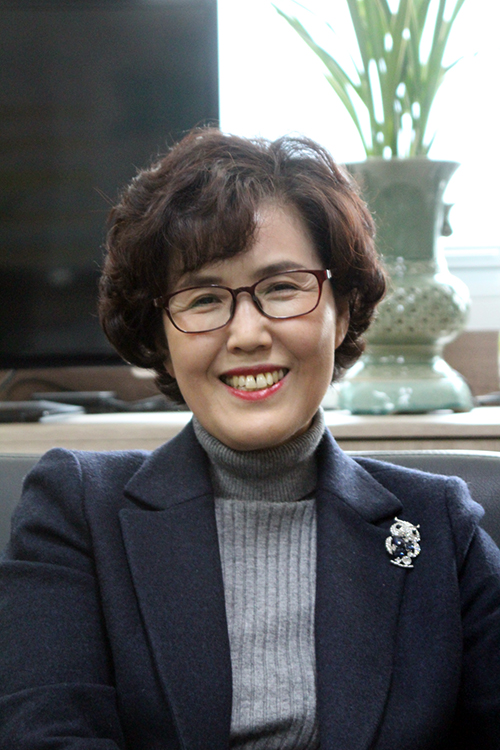
Kim Keum-hee, director of the public healthcare center in Goesan-gun County, is concerned about the decline in medical services due to recent outsourcing trends. She believes that there needs to be a balance between health and welfare.
Asked about the most immediate issues facing her community today, Kim said, "Thirty percent of the population in Goesan-gun County is over 60. Therefore, we're focusing our efforts on the health and longevity of the elderly. For vascular and Alzheimer's disease, we're trying to shift our focus from just treatments to more preventive measures. We are currently working on 13 major areas, which include non-smoking, exercise, moderate drinking, nutrition, obesity, heart disease, Alzheimer's, mental health and oral health."
On some of the hardships she faces out in the field, Kim said, "The current trend these days is to outsource public healthcare services. Given that we lack medical resources as it is, it becomes problematic when personnel are outsourced at the gun or county level. I fear this will bring down the quality of medical services we can provide. Another problem is the skewed weight of the welfare budget. Welfare policies need a proper healthcare system supporting them, but currently we're lacking such a balance."
As of October 2014, there are 254 healthcare centers, 33 city sub-health centers, 1,284 rural sub-health centers and 194 primary health care posts across Korea.
By Wi Tack-whan, Lee Hana
Korea.net Staff Writers
Photos: Wi Tack-whan, the Gangcheon Primary Healthcare Post
whan23@korea.kr
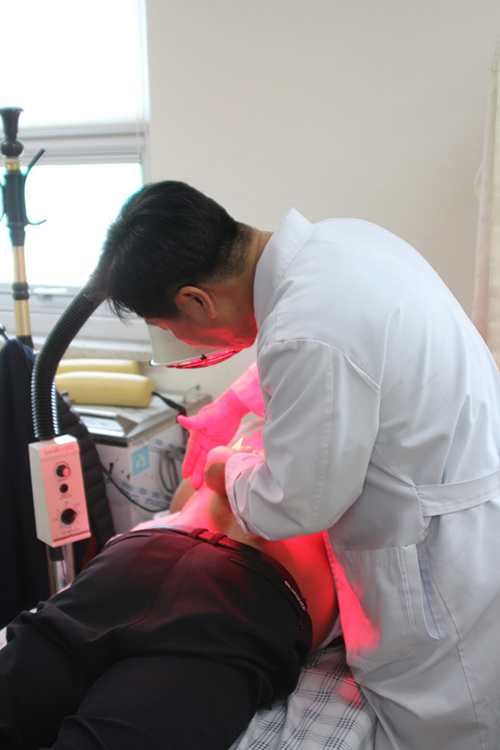
The healthcare center in Goesan-gun County houses a physical therapy clinic. Patients can receive treatment for as little as KRW 1,100.
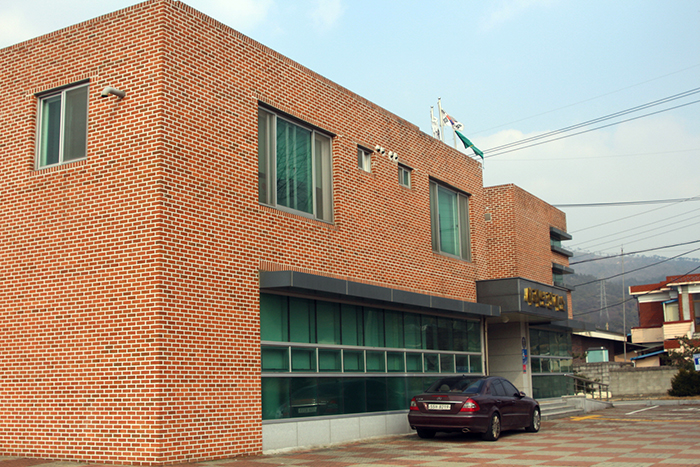
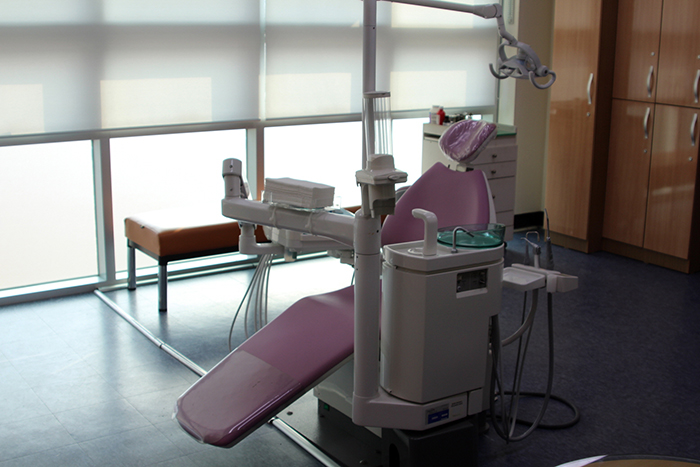
Sari-myeon in Goesan-gun County is home to a primary health care post. It can offer internal medicine, dentistry, health promotion and visiting health care services.
Most popular
- Military discharge sets stage for reunion of all 7 BTS members
- Lee Jae-myung officially sworn in as nation's 21st president
- Presidents Lee, Trump discuss tariff deal in first phone talks
- President's 1st executive order is launch of economic task force
- Method found to boost removal of waste products from brain
